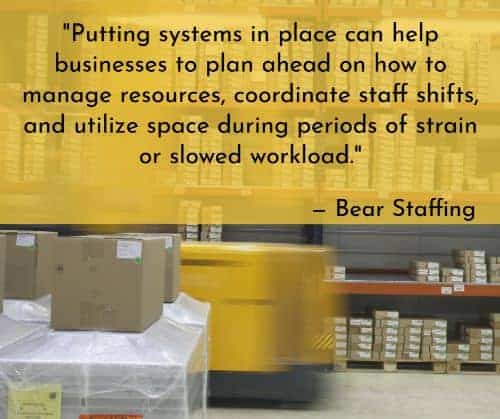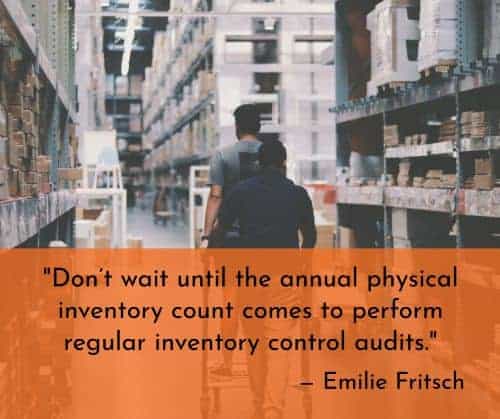Industry Dynamics
50 expert tips on improving warehouse efficiency & productivity
Counts:531 Time: 21-08-05 From: Suzhou Teknect Engineering Co., Ltd.Most warehouses are on an ongoing mission to maximize the productivity process by optimizing workflows, automating processes and reducing waste (both time and resources). Warehouses are complex operations with many moving parts and functions happening simultaneously, so while there are plenty of areas to improve productivity, it’s not always easy to determine where your efforts will pay off.
Advances in logistics technology, such as automated robots, have a big impact on warehouse productivity, along with innovative AI and machine learning solutions, sophisticated warehouse management software and other technology solutions. Taking a look at your current processes and systems to identify bottlenecks and other concerns, implementing process improvements and making smart technology investments that address your key challenges puts improving warehouse productivity within reach.
To help you evaluate your current systems and find opportunities for improvement, we’ve rounded up 50 expert tips on improving warehouse efficiency and productivity, from management and leadership advice to tips for improving your warehouse layout and workflows. Click on a link below to browse tips in a specific section:
Management & leadership tips

1. Introduce incentive pay. “Properly engineered incentive pay for performance can bring the biggest percent improvement in labor productivity. More than 50% of your warehouse labor is in pick and pack, so start there. You always need to be sure you’re not paying for productivity you’re already getting or could get in other ways.” — Curt Barry, 10 Ways to Improve Warehouse Efficiency and Reduce Costs, Multichannel Merchant; Twitter: @mcmerchant
2. Invest in quality training processes. “Hiring quality people is just the start. To keep them on track and help them grow, you need to emphasize training. Training sessions should regularly be conducted in short increments of 45 to 60 minutes. They should be hosted by direct supervisors whenever possible and take on more of a conversational tone than one of lecturing.” — Larry Alton, Apply These 6 Tips to Improving Productivity and Efficiency in Your Warehouse, Small Business Trends; Twitter: @smallbiztrends

3. Prioritize safety. “Safety should be a priority in your warehouse since without smart safety practices you face dangers and accidents that lead to inefficiency and profit loss. Skimping on safety might save you money in the beginning, but accidents are incredibly costly.” — The 5 Best Ways to Increase Warehouse Efficiency, Freight Cowboy; Twitter: @freight_cowboy
4. Cultivate effective front-line leadership. “The best managers are leaders that meticulously monitor, plan and manage all aspects of fulfillment. They are continuously developing their skills so that they can swiftly recognize and address new problems. Warehouses with managers that have access to training resources and exposure to other angles of the business will be most effective in improving warehouse efficiency.” — How to Maximize Warehouse Efficiency, Parcel Pending; Twitter: @ParcelPending

5. Establish a culture that promotes productivity. “The culture you establish will determine every aspect of how your company performs, and you should seek a warehouse culture that is interesting, creative and fun. In addition to asking your employees for new ideas, create additional ways for them to be engaged in their work. Monthly competitions, company events and other concepts that create a more interesting and fun environment will only have a positive impact on your warehouse.” — Thomas Oppong, 5 Ways to Improve Warehouse Efficiency, All Top Startups; Twitter: @Alltopstartups
6. Listen to employees. They have valuable insights on process shortcomings and other productivity-slowing issues. “…you can use the advice from your employees to improve warehouse efficiency. The warehouse staff are the ones who know directly about the strength and the weakness of your warehouse management system. That is why you can spare your time to listen to the advice from your warehouse’s staff because they are the ones who identify and overcome the problem directly from the warehouse.” — 4 Ways to Improve Warehouse Efficiency, Karawang

7. Maintain good relationships with suppliers. “It’s easy to overlook, but a vital component of a well-functioning warehouse is a healthy relationship with suppliers. After all, if you don’t have a product to store and ship, you don’t have a business. Warehouse technology tools, such as GPS systems and barcode scanners, are making it easier than ever to maintain relationships with suppliers.
“As long as the warehouse and its suppliers are technologically compatible, it’s easy for warehouses to update suppliers with information about both short- and long-term needs. It also makes it simple for suppliers to keep the warehouse informed about the status of its product.” — Improving Warehouse Efficiency for Companies in Ecommerce, The Next Scoop; Twitter: @TheNextScoop
8. Cross-train your warehouse workforce. “Cross-training, or training a team of workers to perform different tasks, can be instrumental in boosting productivity in a warehouse. Having highly-specialized warehouse workers can lead to inefficiencies. If a worker needs time off, for example, you might not have any other employees capable of taking over. The current competitive warehouse market and warehouse labor shortage both lead to high turnover rates — exposing your warehouse to efficiency problems if you lose an essential specialized worker. Cross-training your workforce eliminates these issues.” — David Hair, Improve Warehouse Efficiency With a Different Approach, nGroup; Twitter: @nGROUPpartners

9. Focus on employee retention to reduce labor costs. “Labor is an enormous chunk of any warehouse’s operating budget. Paying employees less is not an option, but reducing their dwell time will improve profits overall. Time is money, and idle employees are not contributing to the coffers.
“There are several other suggestions to put into place immediately. Focus on employee retention. It is less expensive to pay an experienced employee than it is to hire and train a new one. Offer cross training and provide continual training seminars on new procedures to improve productivity.” — 8 Tips to Reduce Warehouse Costs, Industry Today; Twitter: @Ind_today
10. Maintain a flexible workforce. “With the changing market conditions and increased customer specifications, having a flexible workforce is important. A balanced personnel ratio target will allow you to meet the fluctuation of production demands at anytime. Team members should be trained through formal programs and receive ongoing training throughout employment. Daily stand up meetings are imperative to the productivity and flow on a shift, and are an easy process to implement.” — Elizabeth Scolari, Lean Warehouse Management: Challenges & Strategies, Handshake; Twitter: @handshake

11. Apply standard measurements to gauge performance. “The warehouse operation is not the same as a production line and warehouse staff does not perform the same repetitive tasks each shift. However, they do perform a number of similar tasks over a period of time. To measure the warehouse productivity, the management must apply standard measurements that can be used for operations that occur in the warehouse, for example, perform physical inventory or place goods in the picking area.
“However, in the warehouse, there is any number of factors that can change the time taken to perform a task. The use of enterprise resource planning (ERP) systems can easily calculate the length of time an operation can take to perform, but a standard measurement must be calculated using a sampling method or time study. Only after the standard measurements are agreed upon can the benefits of any labor measurement can be enjoyed.” — Martin Murray, Measures of Warehouse Productivity, The Balance Small Business; Twitter: @thebalance
12. Recognize your top-performing employees. “Your top performing employees are more than your best producers — they are the lifeline of your operations and role models for new employees. Reward them with verbal recognition and service awards such as gift cards and preferred parking.” — 10 Warehouse Management Tips to Optimize Productivity, RBW Logistics; Twitter: @rbwlogistics
Safety & process improvement

13. Conduct an audit. “You can’t improve something that you haven’t actually analyzed. It is important to gauge if you are using your available resources to the fullest. Is there a flow of goods in and goods out? Any inefficiency within the chain will impact negatively throughout the whole process. Quite often this means that to resolve a problem in the system, the whole system has to be reviewed. It’s no use enforcing a new system in one area if something else isn’t working correctly.” — 8 Tips to Improve Warehouse Efficiency, Vero Solutions; Twitter: @solutions_vero
14. Have experienced workers handle put-away tasks. “Use experienced employees in receiving, they know the products and understand how to stock bins and shelves. Have new employees start by filling orders. It helps them learn the products, customers and paperwork (or electronic inventory) system. It’s also easy to check their work as orders are packed for shipment.” — 7 Tips to Improve Material Handling Efficiency, MCFA

15. Use forecasting to plan resource allocation. “Most businesses experience periods of high and low volume, often varying by season. For example, many manufacturers see an increased demand in Q4 with the approach of the holiday season. Putting systems in place can help businesses to plan ahead on how to manage resources, coordinate staff shifts and utilize space during periods of strain or slowed workload.” — 5 Tips for Improving Your Company’s Warehouse Efficiency, Bear Staffing; Twitter: @bearstaffing
16. Use proper labeling. “An informative label can mean the difference between an efficient and well run warehouse receiving operation and a receiving dock filled with lost products and inefficiencies. No matter what type of inventory control system is used, all receiving labels should include some basic pieces of information.
“That vital information includes the name of the supplier, the associated purchase order number, the pallet label and quantity, the case label and quantity, the product number, the description, the package count and the SKU.” — How to Improve the Warehouse Receiving Process, Floship; Twitter: @floship

17. Identify your KPIs. “A warehouse management solution can help you to track the right things, such as metrics, directly linked to profitability and efficiency. It also can help you to quickly take a look at your most important KPIs and make sure each is tied to a tangible productivity or expense, like inventory accuracy and hours and days to customer. KPIs closely aligned with warehouse pain points — or possible future expenses, like energy efficiency factors — can make it easier to justify expenses and track improvements that really matter.” — Warehouse management: How to improve efficiency, UPS; Twitter: @UPS
18. Maintain your warehouse equipment. “Lift trucks and other equipment your workers use in the warehouse need regular maintenance. A breakdown during use wastes time and costs money in repairs. Create a rotating schedule to pull machines out for routine maintenance. Doing so will ensure you always have trustworthy equipment available for your workers when they need it. With regular maintenance, you also will save the cost of calling for emergency repairs or replacing a piece of equipment.” — 4 Easy Ways to Improve Warehouse Efficiency, Bulk Bag Reclamation

19. Secure the warehouse. “It’s vital to safeguard warehouse facilities by prohibiting unauthorized people inside and near the inventory. This protects both the property and warehouse employees. Post signs in areas where only warehouse personnel are allowed and install physical barriers (safety upgrades) in key areas. Consider badges or uniforms so that authorized warehouse employees can be more easily identified. Inventory is the lifeblood of a warehouse. Make sure to safeguard it!” — 7 Ways to Improve Warehouse Efficiency, Storee; Twitter: @Storeeconstruct
20. Map out your key processes. “Start by mapping out key processes. Brown paper all the activity involved to create a visual. If it’s a picking process, how does the associate receive the order? How do they travel? What equipment are they using? Are they grabbing two or three at a time? Are they taking too many steps? Are they parking the jack in the wrong place?
“This process analysis is a great opportunity to get input from associates on how to improve. Once you identify all the opportunities to take steps and time out of the process, document your optimized process to create a uniform SOP that can be implemented across all operations.” — Bill Jozefowicz, Back to Basics: An Answer to Improving Warehouse Efficiency, Weber Logistics; Twitter: @WeberLogistics

21. Standardize processes. “All repetitive activities should be standardized and documented. Repeatable processes create efficiencies, reduce errors and help with labor planning. Documented processes also help to accelerate the on-boarding of new employees and contribute to their long-term success.” — Warehouse Efficiency and Your Bottom Line, Fidelitone; Twitter: @Fidelitone
22. Reduce the risk of injury with ergonomic interventions. “Injuries in the warehouse and storage industry significantly are higher than those in other industries. For some injuries, the rates are more than double those found in other industries. As a result, investigating the causes of injuries and implementing ergonomic interventions to minimize the risk associated with activities is important.
“Individual workers, managers and engineers can take steps to decrease ergonomic risk factors. Employers and managers should teach and reinforce the use of proper lifting techniques, ensuring the worker’s body is aligned with the part so that no back twisting is necessary and body postures are close to neutral. Items should placed at workstations with consideration given to frequency of use and weight and bulk of items. Mechanical assistance should be provided when necessary, and can include lifts, pickers, fork trucks, hand trucks, carts, conveyors, roller tables, pallet lifts, scissor lift tables or other similar items.” — Brandy Farris Ware and Jeffrey E. Fernandez, Warehouse Ergonomics/Tips And Techniques To Decrease Injury Risk, EHS Today; Twitter: @EHSToday

23. Perform cycle counts. “Don’t wait until the annual physical inventory count comes to perform regular inventory control audits. Perform cycle counts and analyze their discrepancies to perfect the time it should take you to go through all locations. For those of you who don’t know, cycle counting is a type of perpetual inventory counting that takes places in waves over time. Only small subsets of inventory are counted during each wave. It’s good to have cycle counts go through all locations every quarter so that you have a more accurate back-office system.” — Emilie Fritsch, Warehouse Inventory Management: 10 Tips You Need to Know, SkuVault; Twitter: @skuvault
24. Conduct an ABC analysis. “On average, 60% of your warehouse workers’ (or picking-robots’) time is spent on transporting themselves around the warehouse. Since so much time is spent on transport, a highly effective way of increasing the efficiency of your warehouse operations is to ensure that you store goods

 ENGLISH
ENGLISH  简体中文
简体中文